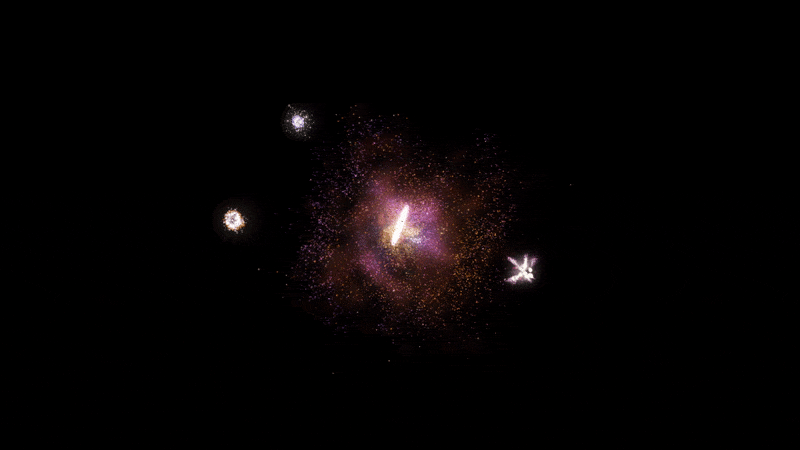Astronomers discover rare "cosmic ring of fire" 11 billion light years from Earth
Sometime in the early stages of the universe, two galaxies violently collided to create a massive and rare ring galaxy. Lurking some 11 billion light years from Earth, the gargantuan galaxy produced so many stars, scientists have nicknamed it the "cosmic ring of fire."
Astronomers identified the unique galaxy using spectroscopic data gathered by the WM Keck Observatory in Hawaii and images recorded by NASA's Hubble Space Telescope. According to a new study in the journal Nature Astronomy, the galaxy challenges previous theories on the formation and evolution of galactic structures.
Out of approximately 4,000 galaxies studied, astronomers said this galaxy was one of the largest and clearest in structure. After further research, they realized they had stumbled upon something unexpected.
"It is a very curious object that we've never seen before," lead researcher Dr. Tiantian Yuan, from the ARC Centre of Excellence for All Sky Astrophysics in 3 Dimensions (ASTRO 3D), said in a press release. "It looks strange and familiar at the same time."
Named R5519, the supermassive galaxy is shaped like a "titanic donut" — round with a massive hole in the middle that measures 2 billion times longer in diameter than the distance between the Earth and the sun. It's similar in mass to the Milky Way, but is much more active, producing stars at a rate 50 times greater.
"Most of that activity is taking place on its ring — so it truly is a ring of fire," Yuan said.
Scientists were aware of the existence of "collisional ring galaxies," but R5519 is the first one ever located in the early universe. As the name suggests, they form when galaxies violently smash into each other.
R5519 likely formed when companion galaxy G5593 collided with it head-on, illustrated in the clip below:
The prevailing belief is these types of collisions were more common in the more crowded early universe — but new data suggests they were just as rare then as they are now.
"Previously, people think we would find more of these collisional ring galaxies in the young universe, simply because there are more collisions back then," Yuan told CNET. "We find that is not the case."
Researchers said collisional ring galaxies are 1,000 times rarer than traditional ring galaxies, which form because of internal processes. Images of R5519, stemming from about 10.8 billion years ago, suggest these types of galaxies have been uncommon since the Big Bang, just three billion years prior.
The discovery of R5519 could also uncover truths about the formation of spiral galaxies like our own.
A "thin disk" of cosmic material must be present in the "victim" galaxy before a collision occurs, and is also the defining component of spiral galaxies. The Milky Way's thin disk only started to form about 9 billion years ago — R5519 shows that disks in spiral galaxies formed over a long span of time.
"This discovery is an indication that disk assembly in spiral galaxies occurred over a more extended period than previously thought," said co-author Professor Kenneth Freeman of the Australian National University.






